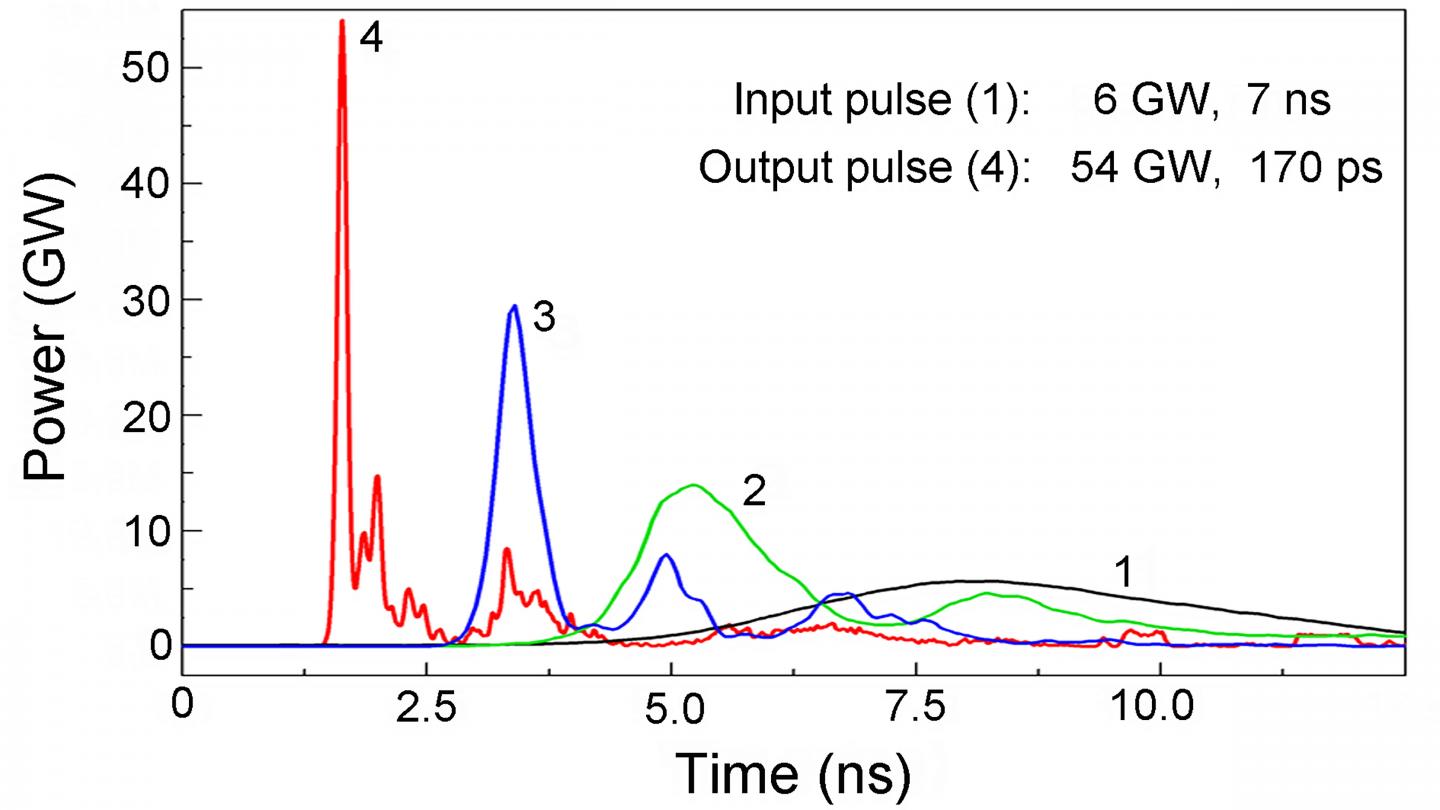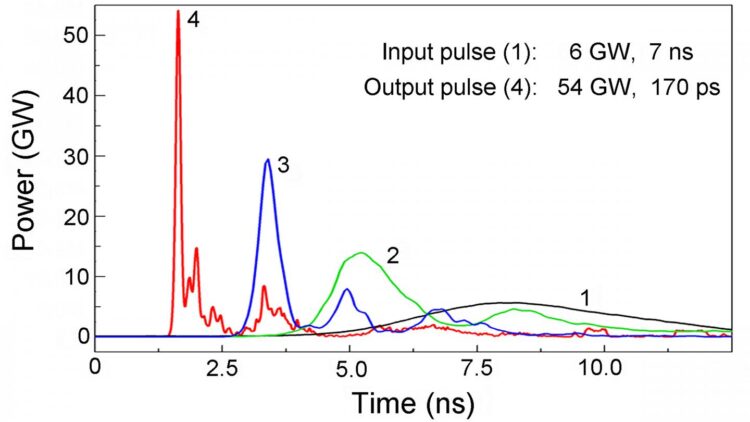Compact solid-state pulsed power generators achieve shorter, more powerful pulses

Credit: Sergei Rukin
WASHINGTON, October 13, 2020 — Powerful picosecond generators are in demand in various fields of experimental electrophysics to produce ultrashort electron beams and X-ray pulses in vacuum diodes and to form runaway electron flows in gases.
They also have applications in high-power microwave electronics, but researchers are constantly striving to obtain shorter and more powerful pulses.
In Review of Scientific Instruments, by AIP Publishing, scientists showed compact solid-state pulse generators could generate electrical pulses of less than one-billionth of a second in duration and up to 50 billion watts in power.
“For comparison, the most powerful hydroelectric power plant in China has an output power of 22.5 billion watts,” said Sergei Rukin, one of the authors.
Improving picosecond generators and mastering higher peak power levels in the picosecond range sets the groundwork for new applications in the coming years.
“This also happened with the development of powerful nanoscecond pulsed devices during the last 60 years,” said Rukin.
At first, generators with unique parameters were developed and then, application areas appeared, such as high-power microwave electronics and X-ray imaging devices for medical and engineering applications.
An input pulse of a nanosecond duration from a solid-state semiconductor opening switch generator was amplified in power and reduced in duration by a three-stage magnetic compressor on ferrite gyromagnetic lines.
The line of each stage operated in the magnetic compression line mode, which occurs at close values of the input pulse duration and the period of oscillations generated in the line.
In the picosecond range of pulse duration, record high values of peak power and rate of rise of the output voltage and power were achieved.
A surprising feature was that neither closing nor opening switches were required in the pulse compression system. The pulse amplification in power and its compression in time occurred automatically during the passage of the pulse among magnetic compression lines.
The researchers are working on an additional stage of energy compression that can be used to generate powerful microwave oscillations and to study the development of electrical discharges in various dielectric media at extremely high electric fields.
###
The article, “Picosecond solid-state generator with a peak power of 50 GW,” is authored by Sergei Rukin, Eugeny Alichkin, Maxim Pedos, Andrey Ponomarev, Sergei Timoshenkov, and Sergey Karelin. The article will appear in Review of Scientific Instruments on Oct. 13, 2020 (DOI: 10 10.1063/5.0017980). After that date, it can be accessed at https:/
ABOUT THE JOURNAL
Review of Scientific Instruments publishes novel advancements in scientific instrumentation, apparatuses, techniques of experimental measurement, and related mathematical analysis. Its content includes publication on instruments covering all areas of science including physics, chemistry, materials science, and biology. See https:/
Media Contact
Larry Frum
[email protected]
Related Journal Article
http://dx.





